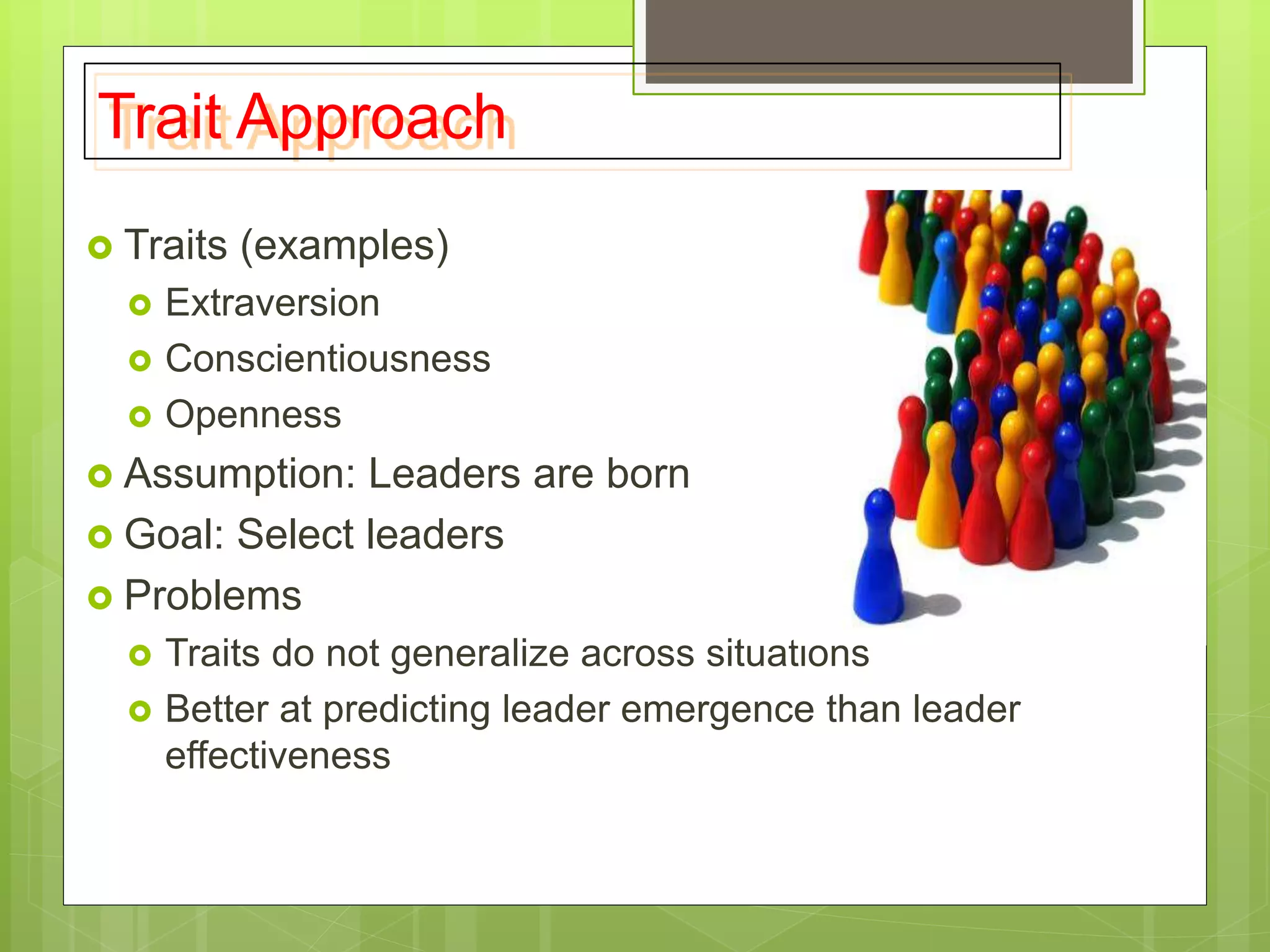The document discusses various theories of leadership including trait theory, behavioral theory, contingency theory, and transformational theory. It examines research from Ohio State University and the University of Michigan that identified two primary dimensions of leader behavior - consideration of employees and initiating structure. The document also outlines qualities associated with good leadership such as drive, honesty, self-confidence, intelligence, and extraversion.































